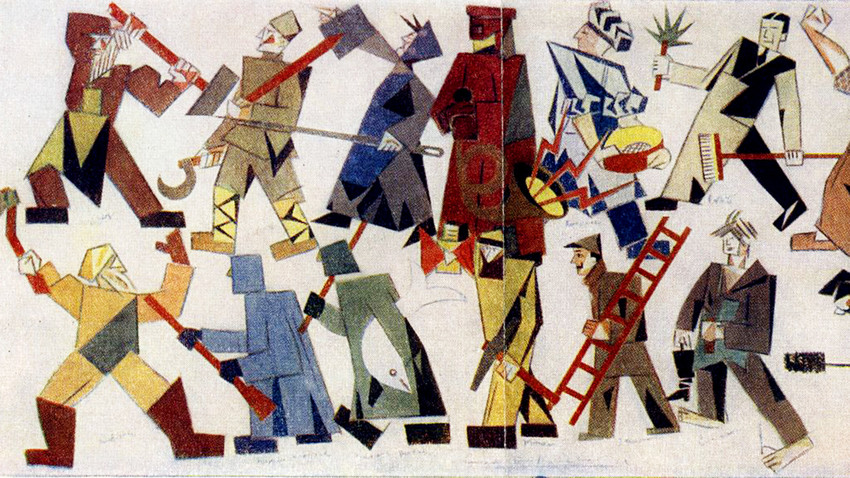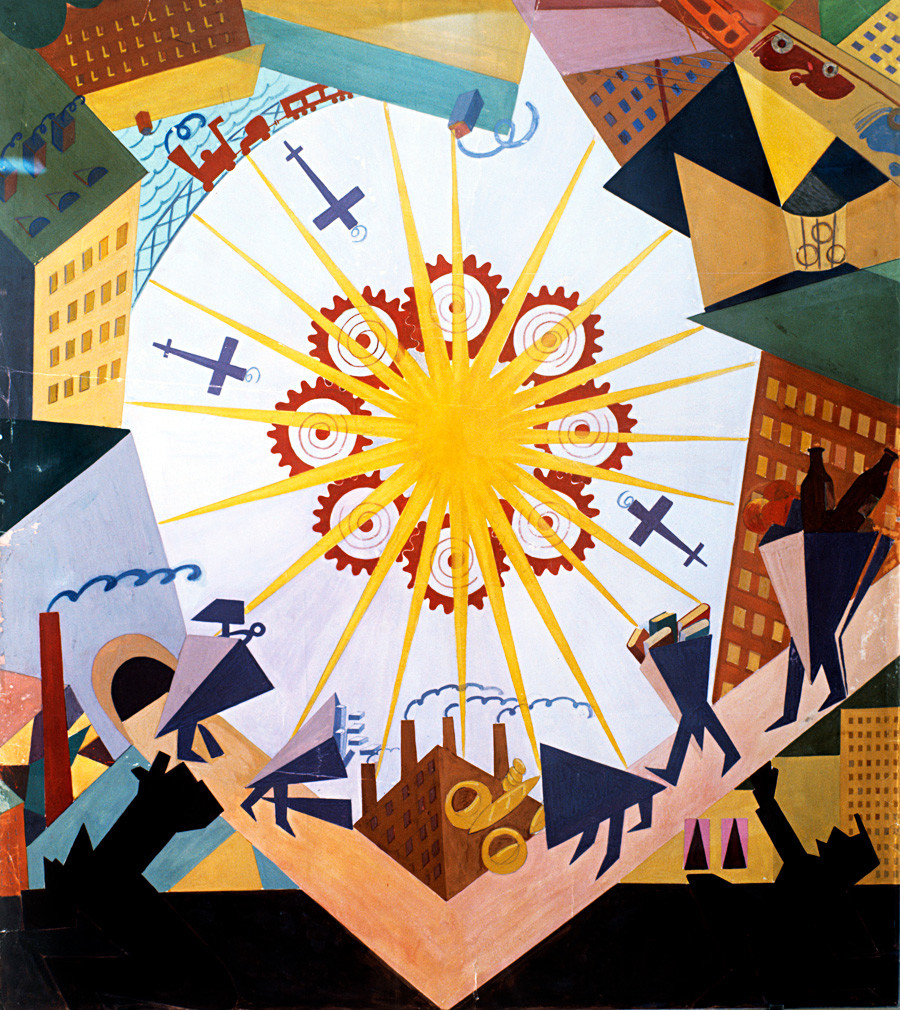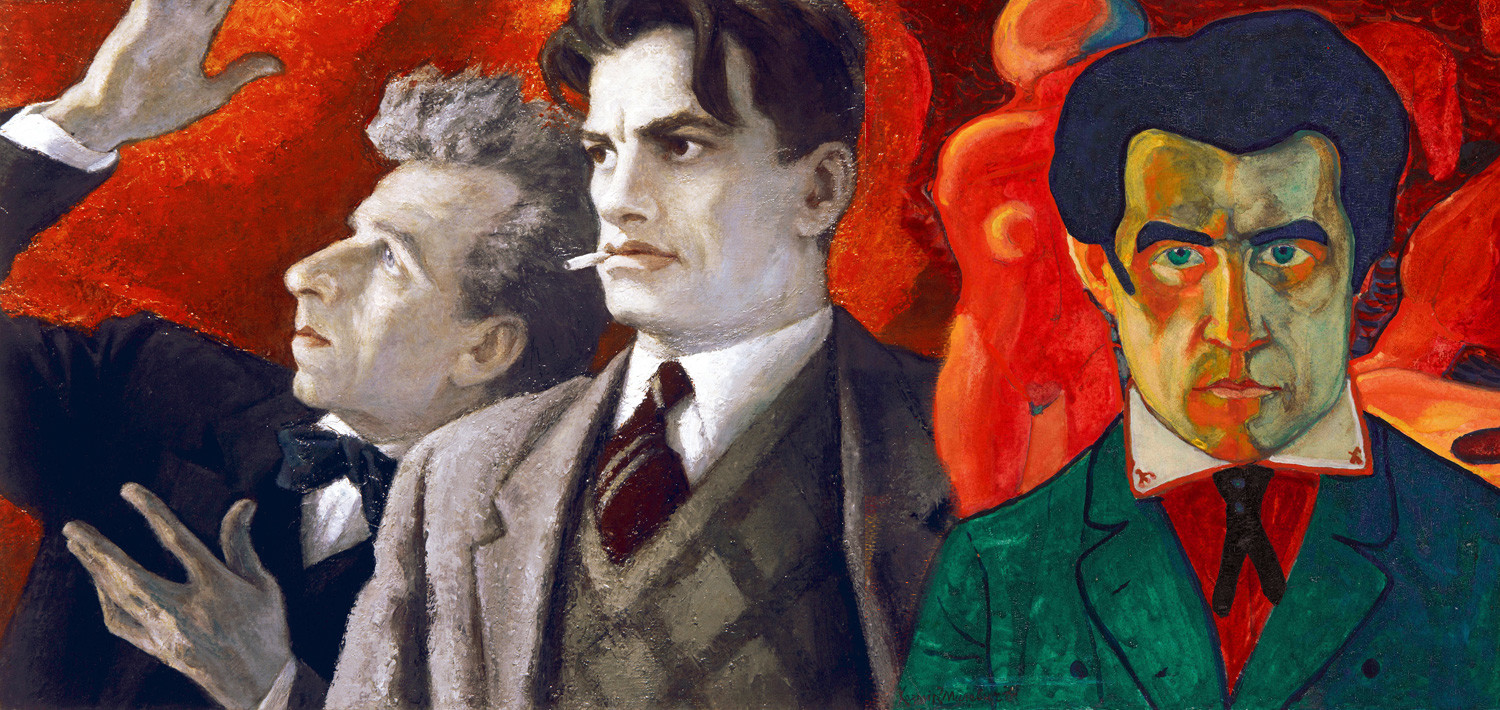Hooligan communism: Why did the Bolsheviks ban their very first propaganda performance?

Costume designs made by Mayakovsky
Archive photoOn a warm day one hundred years ago a small group of friends heard the first-ever play by a Soviet dramatist. Poet Vladimir Mayakovsky was reading Mystery Bouffe to a group that included the Commissar of Enlightenment, Anatoly Lunacharsky, and the famous theater director, Vsevolod Meyerhold.
The play was an aggressive piece of Bolshevik propaganda, opening at the Petrograd Conservatoire in 1918 for three performances, with stage decorations and costumes designed by Kazimir Malevich. This first piece of
Ominous start
The creative process was all but sabotaged, and the audiences indifferent. Lenin called it “hooligan communism.” But why such hostility to a show that seemed so in line with the times?
Things started ominously. A few days after the October Revolution, Lunacharsky as the Commissar of Enlightenment convened a meeting to discuss revolutionary approaches to art in the new era. Hundreds of artists were invited, but only five showed up, among which were Mayakovsky and Meyerhold.
Why such a low turn out? These were still deeply uncertain times, and even though all theaters were under Lunacharsky’s control, many artists were not sure about throwing their lot in with the Bolsheviks. But these five did. Meyerhold’s biographer, Edward Braun, called this “a hazardous act of faith.”

Sketch of decoration for 'Mystery Bouffe'
Y. Levyant/SputnikMystery Bouffe is by any standards a strange play, written in Mayakovsky’s trademark energetic and tumbling verse. The story is the Biblical parable of Noah’s ark transplanted into the industrial age. The flood is the Revolution, cleansing the world of the bourgeoisie. The ‘new common man’ leads the proletariat to a mechanized paradise, where tools and even food obey humans.
The play’s cast was huge, with over 70 characters acting in a declaratory and rhetorical style. The conservative Actor’s Union labeled it “futuristic,” which according to Mayakovsky’s biographers Ann and Samuel Charters, is the “word they gave to everything they didn’t understand.”
We are certainly very far away from the living rooms of Chekhov, Mayakovsky says as much in the Prologue.
“Uncle Vanya
And Auntie Manya
Parked on a sofa as they chatter
But we don’t care
About uncles or aunts:
you can find them at home - or anywhere!”
He did not want the play to imitate observable reality. This was also Malevich’s approach to the design, as he said: “I saw my task not as the creation of associations with the reality existing beyond the stage, but as the creation of a new reality.”
The play opened with actors coming onstage and ripping up posters of popular performances of that time. It was a declaration of war on Imperial-era theater.
Failed staging

'Mystery Bouffe' in Meyerhold Theater
Archive photoThe Petrograd Conservatoire was less than cooperative, and they refused to sell copies of the script. The doors to rehearsal rooms were boarded shut. Nails for the set were kept under lock and key. Actors were very suspicious of the project, and most refused to be involved. An advertisement was put in the paper: “Comrades! It is your duty to celebrate the great day of the Revolution with a revolutionary show.” In the
Tellingly, most critics did not think the play worthy to be reviewed. Later, however, theater director Vladimir Solovyov wrote
An outdoor performance was canceled, and the Futurists were banned from participating in forthcoming May Day celebrations. Bolsheviks worried that this style would put off the proletariat.
Tragic fates
In retrospect, the experience suffered by this show anticipated the subsequent careers of Mayakovsky, Malevich
Malevich’s artwork was banned and confiscated for being abstract and “bourgeois,” and he was imprisoned in 1930 where he developed cancer. He dabbled in figurative art in the early 1930s, but then died in 1935

Collage, L-R: Meyerhold, Mayakovsky, Malevich
A. Sverdlov/Sputnik, Tretyakov GalleryOptimism gives way to repression
Indeed, the optimism of the Revolution gave way to paranoia, censorship
As Lunacharsky said of Mystery Bouffe, it was “incomprehensible to the new world.” The history of the play shows that Bolshevism and art had a troubled relationship from the very beginning. Even when they seemed to be toeing the ideological line, these artists were too independent and radical even in the supposedly experimental and revolutionary atmosphere of a hundred years ago.
Read more: Curtains up, shoot! How theater survived the 1917 Revolution amid gunfire
If using any of Russia Beyond's content, partly or in full, always provide an active hyperlink to the original material.
Subscribe
to our newsletter!
Get the week's best stories straight to your inbox